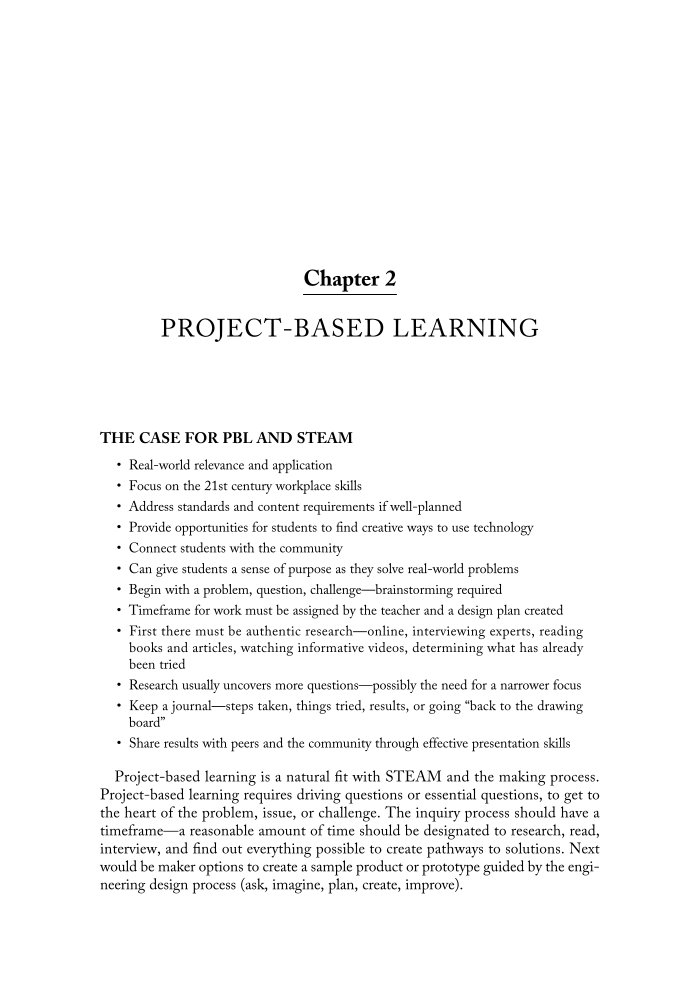Chapter 2 PROJECT-BASED LEARNING THE CASE FOR PBL AND STEAM • Real-world relevance and application • Focus on the 21st century workplace skills • Address standards and content requirements if well-planned • Provide opportunities for students to find creative ways to use technology • Connect students with the community • Can give students a sense of purpose as they solve real-world problems • Begin with a problem, question, challenge—brainstorming required • Timeframe for work must be assigned by the teacher and a design plan created • First there must be authentic research—online, interviewing experts, reading books and articles, watching informative videos, determining what has already been tried • Research usually uncovers more questions—possibly the need for a narrower focus • Keep a journal—steps taken, things tried, results, or going “back to the drawing board” • Share results with peers and the community through effective presentation skills Project-based learning is a natural fit with STEAM and the making process. Project-based learning requires driving questions or essential questions, to get to the heart of the problem, issue, or challenge. The inquiry process should have a timeframe—a reasonable amount of time should be designated to research, read, interview, and find out everything possible to create pathways to solutions. Next would be maker options to create a sample product or prototype guided by the engi- neering design process (ask, imagine, plan, create, improve).
Document Details My Account Print multiple pages
Print
You have printed 0 times in the last 24 hours.
Your print count will reset on at .
You may print 0 more time(s) before then.
You may print a maximum of 0 pages at a time.

























































































































































































